I suppose there aren’t many bad pollinators, but I’ve certainly relished the good work of pollinators in my garden this autumn and, in fact, for the whole of this past growing season. Today is the first Wednesday of the month and time to appreciate those who require and benefit from our efforts as gardeners.
Gardeners garden. It’s what we do. Neophyte gardeners are first attracted to the multitudes of choices with blooms-n-foliage, as well as the endless arrangements therein as we delve into the joys of augmenting personal outdoor space. But sooner or later, we notice those who “visit” our gardens: pollinators, birds, mammals, reptiles. With greater observation and understanding, the notion of garden beauty morphs into more than an emphasis on the human-focused composition of plants to a recognition of the purpose of those plants, as well as the gardener’s role in promoting a healthy, diverse environment. For many gardeners, the drive to attract wildlife to our particular slice of the Earth spurs deeper learning about plants and the processes of wildlife gardening.
When I was traveling in October, a neighbor sent me a Facebook message with a photo attached, wondering what “this” butterfly was. I didn’t have time during my travels to research, but did take a look at on-line butterfly sources once I returned home. In my own garden, I observed this Tailed Orange, Pyrisitia proterpia, working blooms one afternoon.
I sent my Tailed Orange link to the neighbor and she delightedly affirmed that “my” Tailed Orange was “her” butterfly, too. Score! While probably not the same individual butterfly, clearly this was a species hanging around the neighborhood.
Tailed Orange butterflies are fast flyers, the adults nectaring on many flowers as they move rapidly from one to another. Tailed Orange butterflies prefer plants in the pea (Fabaceae) family as their hosts.
Another cheery autumn yellow butterfly common in Texas most years is the Cloudless Sulphur, Phoebis sennae.
Also utilizing host plants in the Fabaceae family, this butterfly graces my garden annually from the end of summer, well into early winter. I grow the native Lindheimer’s senna, Senna lindheimeriana,
…which is a likely plant (check out the species name of the insect!) in which these butterflies lay their eggs. In the future, I’ll need to keep a keener eye out for the larvae on the leaves and snatch a photo of the juveniles of this insect.
Queens, Danaus gilippus, which are year-round residents here,
…and a few straggler migrating Monarchs, Danaus plexippus,
…continued their regular visits, though I haven’t seen a Monarch since mid-November.
This little cutey, a Spotted Beet Webworm Moth, Hymenia perspectalis, rested on a Purple coneflower, Echinacea purpurea,
…while this Clouded Skipper, Lerema accius, contemplated a shuttered Rock rose, Pavonia lasiopetala bloom.
Another skipper, a Tropical Checkered Skipper, Pyrgus oileus, was loathed to pose for a photograph in the bright Texas sun, but eventually, relented.
It enjoyed the bounty of a Rock rose flower, which is a member of the family (Malvaceae) that this butterfly requires as its host. The checkerboard pattern on the upper wings,
…and its “hairy” body were the keys for identifying this butterfly.
I often see Grey Hairstreaks in the garden but this past month I enjoyed a Mallow Scrub Hairstreak, Strymon istapa, as it visited several flowers in the aster or Asteraceae family.
Hairstreaks are such pretty butterflies, with subtle coloring and unique markings.
A Variegated Fritillary, Euptoieta claudia,
…a Gulf Fritillary, Agraulis vanillae,
…an American Painted Lady, Vanessa virginiensis,
…and a Southern Dogface, Zerene cesonia,
…all are typical butterflies which contributed to the mass of butterfly/moth activity gracing my November garden.
It wasn’t just about butterflies and moths this month, though. There were beetles–lots of beetles–in the garden this past month.
They employ some sipping of the nectar, but also cause a little damage leaves and petals during their feedings. Does that make them bad pollinators? Nah, I never met a pollinator that I didn’t love. Or, at least tolerate.
Additionally, native bees were out in force in the last weeks of full-bloom garden action. Throughout summer, I’d catch a glimpse of a stunning metallic green bee, but I was never fast or organized enough to document its activity–until this month!
I’m fairly sure that this gorgeous bee is a Green metallic bee, Agapostemon texanus.
Though rare, this species of wild bee are seen in this part of Texas. I was pleased to watch her work the flowers of a Goldeneye, Viguiera dentata.
Also enjoying fall-blooming Goldeneye, were two kinds of Sweat bees:
Lasioglossum spp.
…and Halictus tripartitus.
A Small carpenter bee, Ceratina sp., nectared and gathered pollen from a Rock rose.
Identifying native bees is tricky because there’s just not that much research on these important pollinators. To help me figure out what I’m seeing in my garden, I use a site hosted by an entomologist at The University of Texas, Professor Shalene Jha, who studies Texas native bees. The site focuses on native ecosystems and native bee sightings in wildlife preserves. The information on the native bees is local and relevant to Texas, the photos of these bees, remarkable.
Not a pollinator, but a regular contributor to Wildlife Wednesdays, this juvenile Anole lizard is most likely making his/her last appearance for a while.
I might spot one from time-to-time over the course of the next few months, but they’ll be nicely tucked in for our (usually) mild winter.
Did wildlife visit your garden this past month? Please post for December Wildlife Wednesday. Share the rare or mundane, funny or fascinating, beneficial or harmful critters you encounter. When you comment on my post, please remember to leave a link to your Wildlife Wednesday post so readers can enjoy a variety of garden wildlife observations.
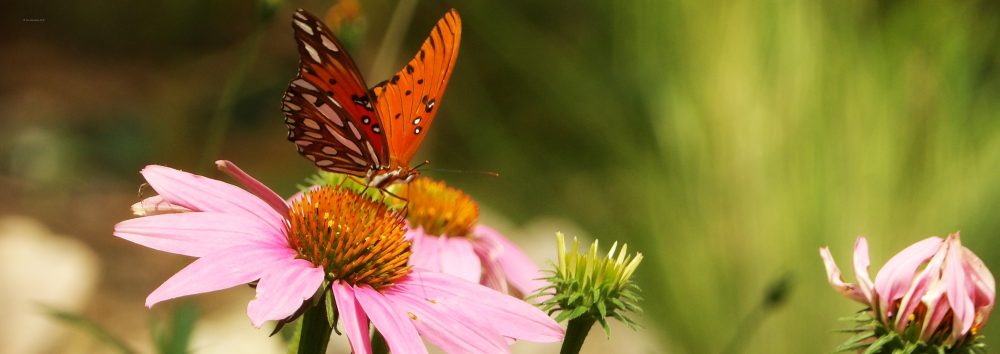




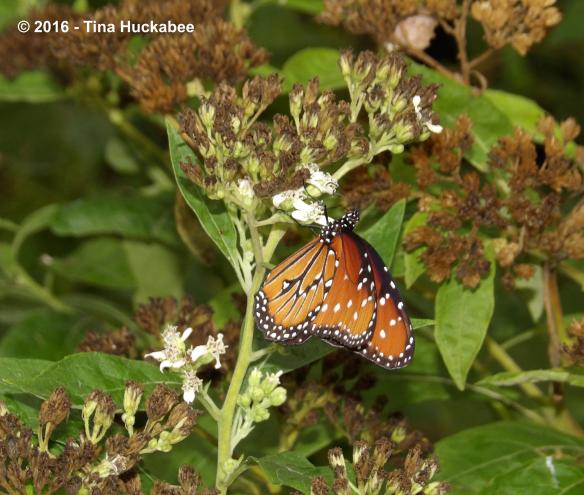














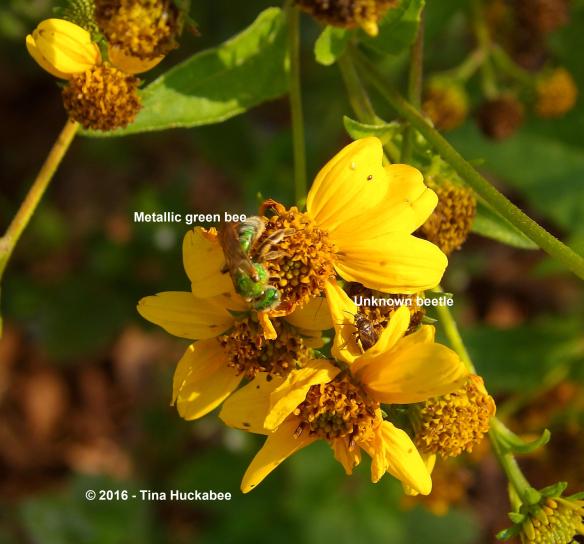



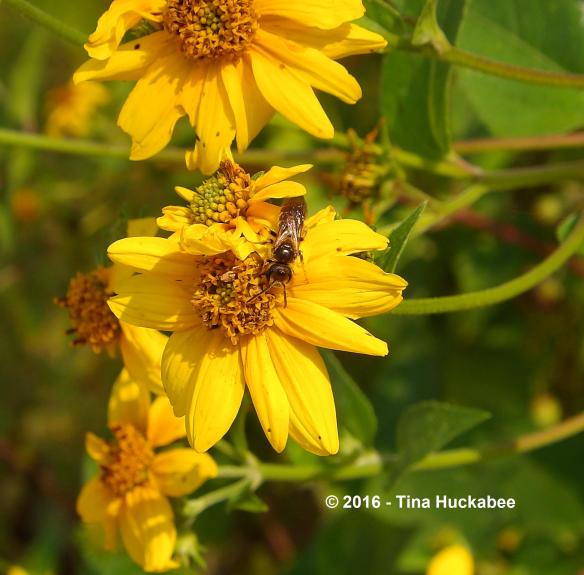



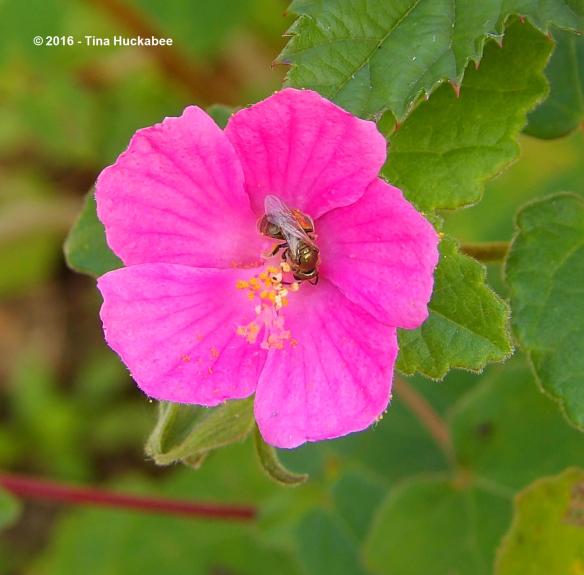
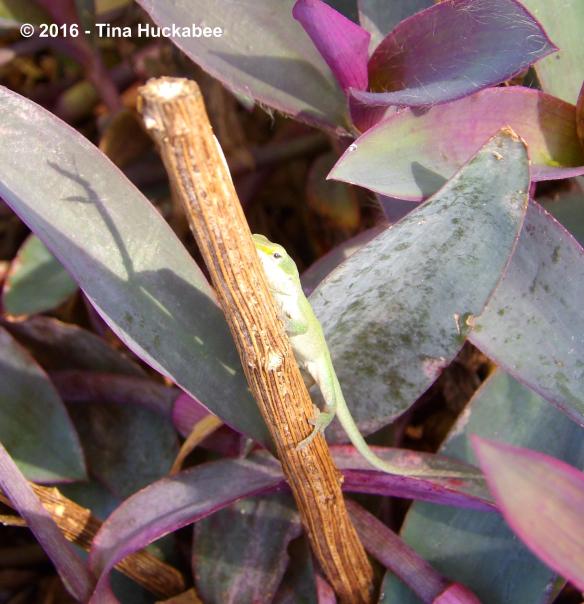
I loved reading the second paragraph – it’s so very true. I have been astonished at how my enjoyment of my garden has deepened since I gardened with wildlife in mind. Like you, I have yet to meet a pollinator I didn’t like. What an enjoyable post – the photos are amazing!
LikeLike
Glad you enjoyed the post, Sarah. I think many gardeners–and their gardens– are enriched with greater knowledge of wildlife and how to feed and protect that wildlife. I was very lucky to catch some of these shots!
LikeLike
A very impressive collection of pollinators and a great job of capturing them in photos. I will keep my eye out for a green bee, although it may be too late with the cold coming.
LikeLike
Thanks–I haven’t spent much time in the garden capturing photos, so I’m glad that the insects cooperated. 🙂 We’ve had rain recently and the forecast is for our first freeze. Boo! I’m betting Austin in town won’t get that cold.
LikeLiked by 1 person
Wow! A wonder of bugs, butterflies and blooms! Lovely! 🙂
LikeLike
It was a great autumn for the pollinators and blooms and bugs, too!
LikeLiked by 1 person
Love the butterfly photos. Of course, they can be ornery cusses during mating season…
LikeLike
Haha, locking horns and all….
LikeLiked by 1 person
Pingback: Wildlife Wednesday, December – Fight Club | Frogend dweller's Blog
Tina, it is so lovely to see your pollinators going strong. Ours are mostly hibernating now, especially with the cold spell over the last two weeks. That glorious metallic bee is a wonder and looks almost like part of the goldeneye flower.
Most of my photos are of birds, but there are a couple of surprises: http://wp.me/pM8Y1-3La
LikeLike
It’s been a real treat for the pollinators this year, after so many years of drought. Isn’t that metallic bee gorgeous? I saw one (or maybe several) on and off during the summer, but never could get a good shot, so I was tickled that I could actually prove they were in my garden!
LikeLiked by 1 person
Tina I love all the butterflies, the bees, the beetles, the flowers and my dear lizard anolis: they are all wonderful. I really liked the orange butterfly and the gulf aurinea. Monarch butterflies still visit her: what an illusion to see them. La Senna lindheimeriana is a very beautiful flower. Tina is lucky enough to live in a place where she has a climate where she still has flowers and butterflies. However I live in an area of mountainous Spain and now the only thing there are very strong frost or snow. Now we have 3 ° Celsius and this night -2 ° Celsius: the weather is not bad at all. I am a gardener only good at visiting bees and wasps, but I want more animals to come. This year, I have been almost without plants, I am completely rethinking the plantations of the garden to find food and shelter for wildlife, and to enjoy it. I’m sorry, Tina, for telling my garden things. Thank you. Happy Advent. Greetings from Margarita.
LikeLike
Where you live does sound very cold, but I’m sure wildlife is still around. Usually plants with berries, winter fruits and nuts and providing cover and water sources are what a gardener can do for wildlife in cold climates. Where I live does have very nice fall, winter and spring temperatures, though our summers are long.
LikeLike
Tina thank you very much for your advice: I will start them. Greetings from Margarita.
LikeLike
So many butterflies still in your garden. Great images, well done.
LikeLike
Thanks, Christina–my garden is a labor of love.
LikeLiked by 1 person
I have lots of butterflies from the past month too! We won’t see so many after the predicted freeze though. A new one to me is the Tailed Orange. I need a butterfly app with all the subtle differences to sort out.
http://rockoakdeer.blogspot.com/2016/12/wildlife-wednesday-december-2016.html
LikeLike
The freeze will ding lots of things, if it happens….
LikeLike
Pingback: Wildlife Visitors in November | My Wild Australia
Wonderful photos Tina, and I was quite interested in seeing your pic of the American Painted Lady, since I have a photo of an Australian Painted Lady in my Wildlife Wednesday post! You can see it here https://mywildaustralia.wordpress.com/2016/12/08/wildlife-visitors-in-november/
LikeLike
Hah! The international butterfly: Painted Lady! It’s interesting to look at and read about insects from other parts of the world and see relatives of the insects in my particular corner. Nice!
LikeLiked by 1 person
So nice to see these ‘summer-looking’ images Tina 🙂 I never cease to wonder at this almost continuous gardening season you have. I would like to have butterflies and bees flying around all year long, unfortunately is not possible ;(
Things have quiet down here, even the birds seem to be in the hiding; all I can do to ‘keep the flowers going’ is talking about the summer trips (soon).
LikeLike
It is nice to have insects out-n-about for so much of the year, I have to admit, but all places have their beauty! It’s always nice to plan for the next adventure–or two!
LikeLike
We had our first meeting of the Clear Lake NPSOT chapter last month, and Angela Chandler (she of the Garden Academy) was the speaker. Since she focuses on the Houston area, I don’t know if you know her, but her presentation was on pollinators,and it was fascinating. She covered butterflies, of course, but also bees, flies, wasps — just about everything that pollinates, I think. It was fun to soo so many of the insects she mentioned in this blog. What a treat it must be for you to have all these beauties around!
LikeLike
JUST WANTED TO SAY I HAVE BEEN FOLLOWING YOUR SITE FOR A WHILE AND I JUST LOVE IT!
LikeLike
Thank you so much, Janet!!
LikeLike
Great shots, Tina! I enjoyed your parade of butterflies, but was completely swept away by your Green Bee. Wow – what a sight! Very, very cool!
LikeLike
Thanks! It’s been such a good year for our pollinators–best in a while. Isn’t that bee a beauty? I was tickled to snag some good photos, as it’s a fast flyer.
LikeLike
Well, you did it justice, for sure! 🙂
LikeLike
Thanks!
LikeLike
Oh, to have butterflies in December! I miss them. Most of the ones you show here are ones that we get, too. Instead of Gulf Fritillaries, we have Great Spangled Fritillaries. Tailed Orange was a new one for me — must be a warm climate species. Enjoy your pollinator visitors!
LikeLike
It’s in the 20s now, so the main butterfly show is done. Boo! I will see Red Admirals though once the temps warm up–I don’t know where they hang out, but they’re always around, even after a freeze!
LikeLike
Pingback: Wildlife Visitors in December 2016 – snaphappi